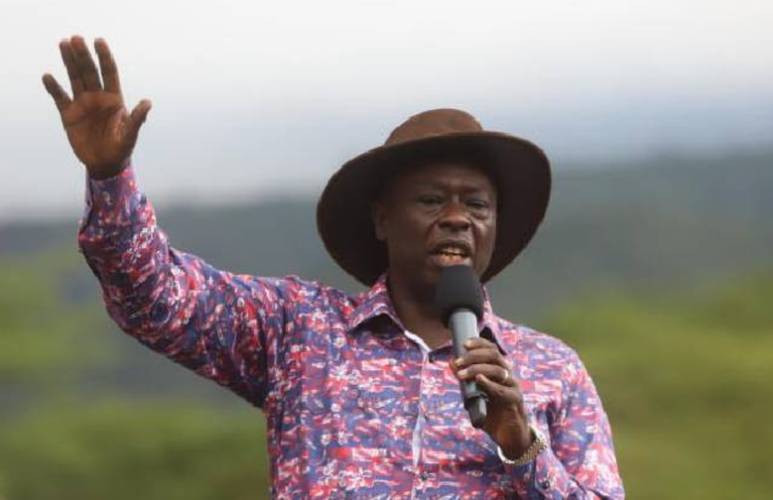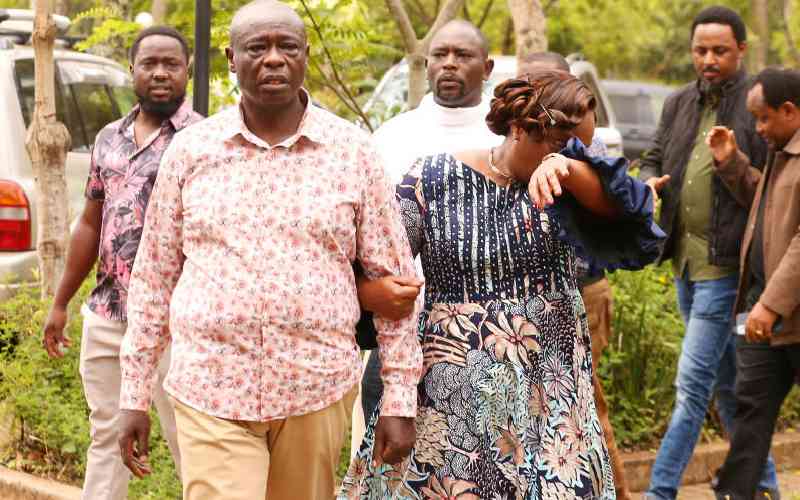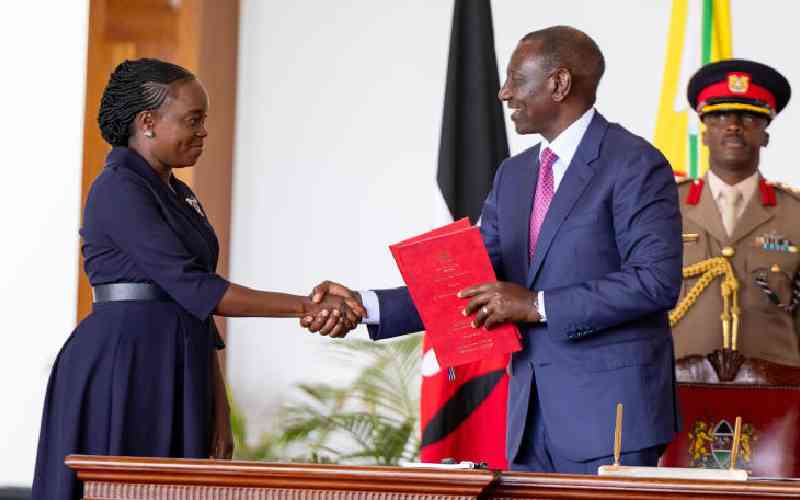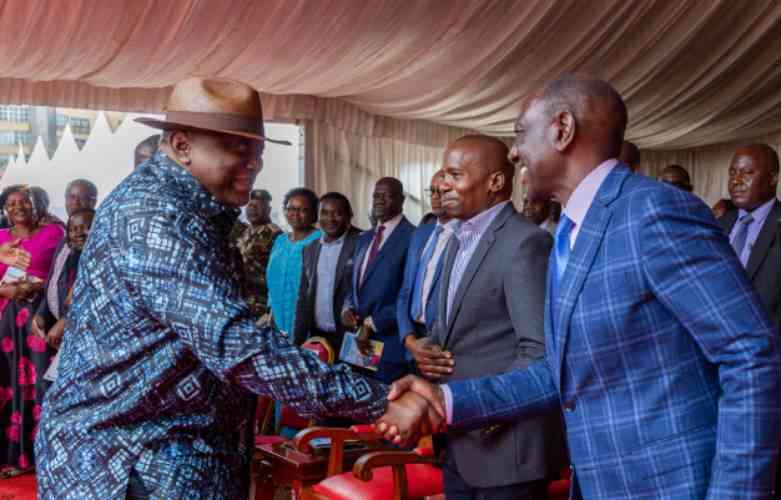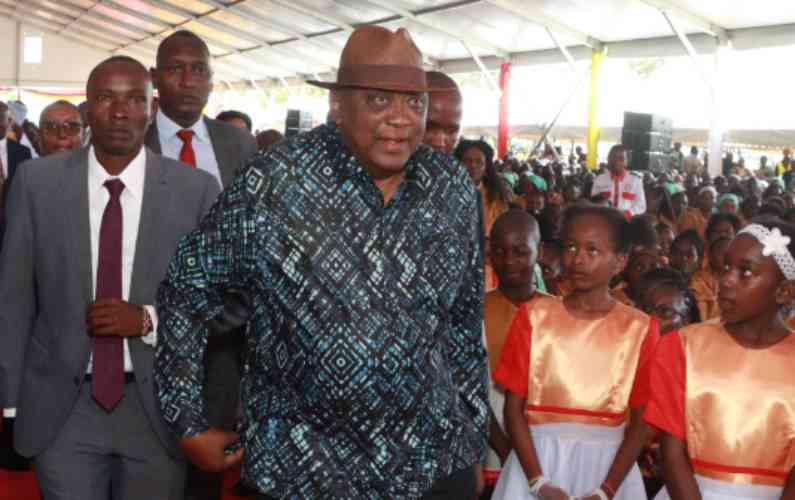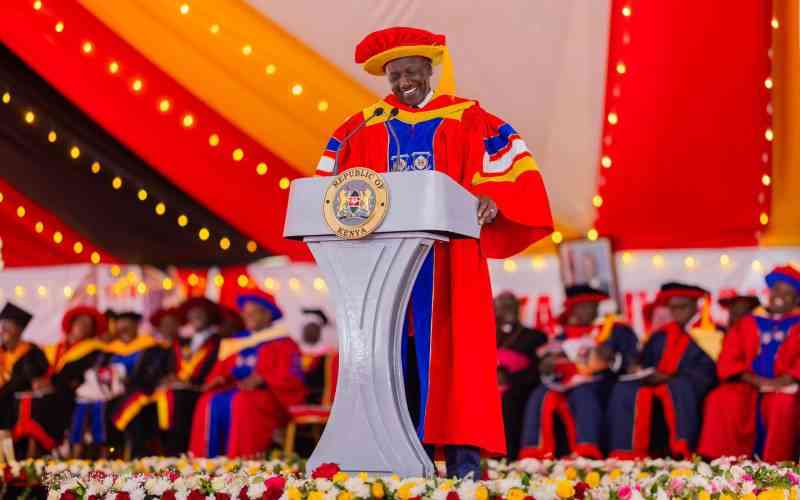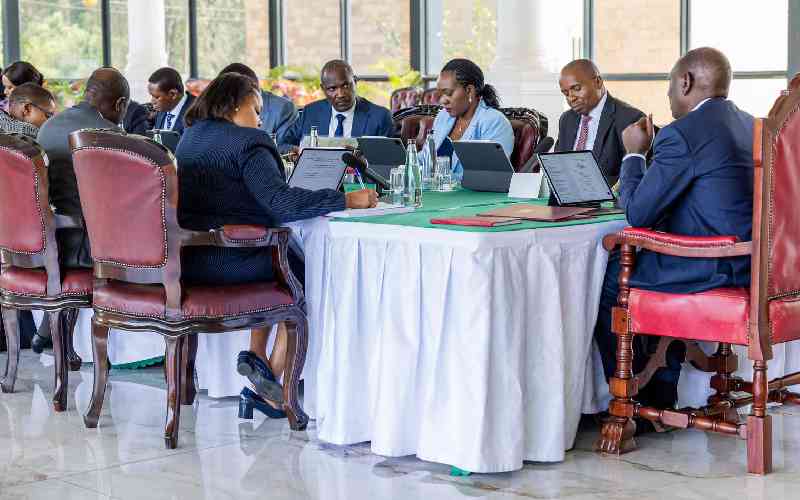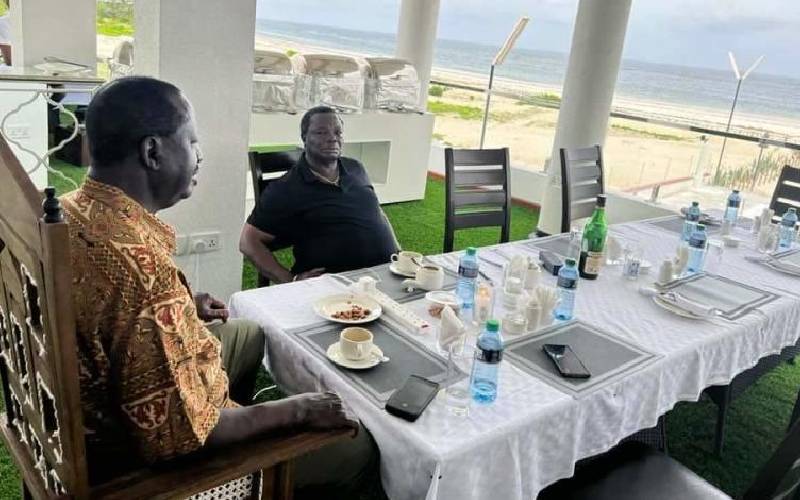
ODM leader Raila Odinga and COTU Secretary-General Francis Atwoli, December 16, 2021. [Courtesy, Standard]
Raila’s coalition-building journey has been long, having started in 1997 when the National Development Party (NDP), which he was leading, merged with Kanu, then led by President Daniel arap Moi.
However, just ahead of the 2002 General Election, he and other political heavyweights left Kanu to join the Liberal Democratic Party (LDP). This is the party that Raila led into another coalition with the National Alliance of Kenya (NAK), then led by Mwai Kibaki. Together, they formed the National Rainbow Coalition (Narc).
In 2007, Raila bolted out of Narc together with a group of MPs allied to him and who had been in his team during the 2005 referendum campaign. He then reached out to elders from Rift Valley, through whom he courted a new crop of political leaders then emerging in the region. By then, they had formed the Orange Democratic Movement (ODM).
Fourteen years later, Raila is now seeking new partnerships in various regions, particularly the Coast, Nyanza and Mt Kenya, presenting both promising opportunities and inherent challenges. At the Coast, several parties have already aligned themselves with Azimio la Umoja, among them Governor Amason Kingi’s Pamoja African Alliance (PAA).
Kingi said PAA stands for economic empowerment and land injustices in the region and its leaders have decided to team up with Raila because they have similar ideology.
“We should ask ourselves how we will benefit from Raila’s government because we shall give him our votes, but we have to know our stake before the elections,” said Kingi.
In Kisii, Ford Kenya Vice Chairman Richard Onyonka has already decamped to ODM and was present at the Azimio la Umoja Convention in Kasarani. He has said his ideals mirror those of Raila and he will therefore be campaigning for the ODM leader after relinquishing his party position.
In Mt Kenya, Raila has reached out to voters through the Mt Kenya Foundation elders and business leaders from the region, which is now home to several young parties, such as the newly-launched Devolution Empowerment Party led by Meru Governor Kiraitu Murungi.

Former Ford Kenya officials Tongaren MP Eseli Simiyu and Kanduyi MP Wafula Wamunyinyi back Raila Odinga. [File, Standard]
Despite his coalition-building efforts, Prof Gitile Naituli of Multi-Media University does not see the wealthy Mt Kenya businessmen helping Raila much in terms of galvanising support for his presidential bid besides the financial muscle they are likely to offer.
“I think they will be a liability that he should not entertain because many people that DP Ruto is appealing to in the region may not want to see those people near them,” says Prof Naituli. In 2007, Uhuru Kenyatta - who was then Kanu chairman - supported the re-election of President Kibaki and now as President and Jubilee Party leader, he is seen as supporting Raila’s Azimio la Umoja.
Coalition partner
Uhuru’s decision to make Kanu a PNU coalition partner was crucial in uniting the Mt Kenya vote as Kibaki pulled strings in other areas through Cabinet ministers and their parties.
Parties that joined PNU included Kanu, Narc Kenya, Ford Kenya, Democratic Party and Shirikisho among others. PNU also embraced small parties like The Independent Party, then led by Kalembe Ndile.
The difference between Azimio now and PNU then is that whereas the former has been launched nine months to the General Election, the latter was created in September, just three months to the 2007 elections.
Azimio has also joined a depleted Jubilee Party left bleeding by Deputy President William Ruto, who took off with part of the constituency that he had contributed when URP - his party - joined TNA to form Jubilee in 2016.
“Jubilee is just a shell because it has actually been rebranded as UDA and given a new life with more members across the country as the original party ponders what to do next,” says Prof Naituli.
The possibility of a fallout in Mt Kenya East also looms large for Raila and his Azimio la Umoja team.
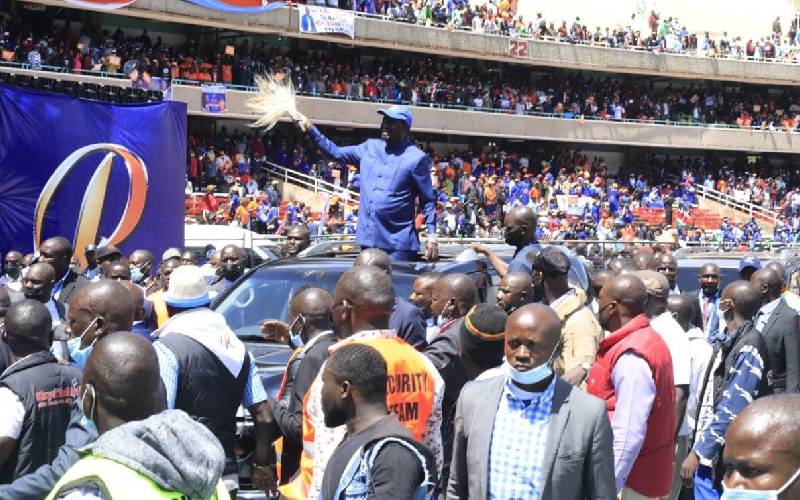
Raila Odinga arrives at Kasarani for the Azimio la Umoja conference, December 2021. [File, Standard]
Raila brought together Meru Governor Kiraitu Murungi and his predecessor, Peter Munya, to hold hands at a public rally when he visited the region recently. The symbolic gesture was a show of unity and harmony between the two leaders from the Meru region.
However, Kiraitu was conspicuously missing when it mattered most at the Azimio la Umoja Convention at Kasarani earlier this month. Munya, on the other hand, was one of the main speakers at the event where Raila launched his presidential bid.
Both Kiraitu and Munya lead their own parties which are expected to team up with others in the Azimio bus. Also expected on board is EALA MP Mpuru Aburi’s National Ordinary People Empowerment Union.
Last year, Kiraitu had asked Jubilee Party Secretary-General Raphael Tuju to revoke Aburi’s nomination as a member of East African Legislative Assembly (EALA).
Kiraitu had accused Aburi - an ardent Munya ally - of gross misconduct because he had registered his own political party contrary to Jubilee Party rules.
It is worth noting that the EALA MP is also a big supporter of Raila and calls himself “the Raila of Meru”.
Asked about Munya’s influence in the larger Meru region, Prof Naituli said it was negligible.
“He commands about 300,000 votes at most and that is largely from Tigania while the Igembe and Imenti who are the majority are mainly with the Governor,” said Naituli.
The rivalry between the two political leaders is one of the storms that Raila and Azimio la Umoja are expected to navigate through as he hunts for the Mt Kenya votes.
It is instructive that Munya, a Cabinet Secretary, was chief guest at the launch of the Democratic Action Party of Kenya (DAP-K) at The Bomas of Kenya on Tuesday.
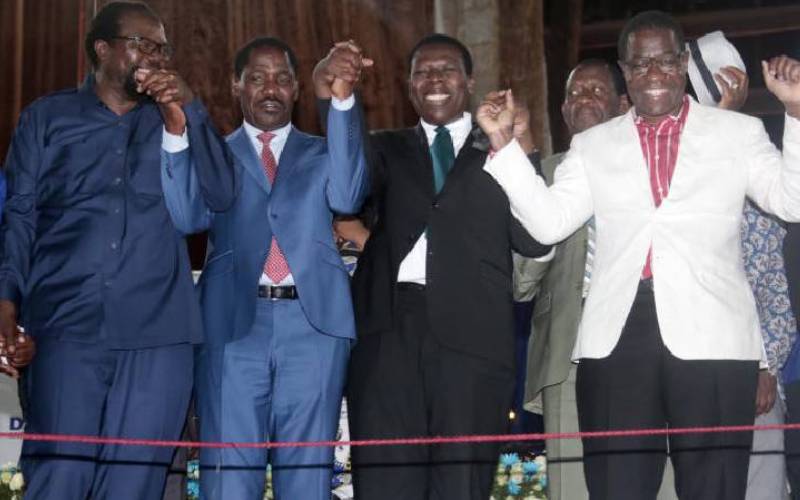
CS Peter Munya was chief guest at the launch of the Democratic Action Party of Kenya (DAP-K). [Courtesy]
The party led by MP Wafula Wamunyinyi is associated with politicians from western Kenya and is expected to be used by aspirants allied to Azimio la Umoja in the 2022 elections.
Rally support
Among the guests at the party’s launch was Defence CS Eugene Wamalwa and other Cabinet secretaries leaning towards Azimio.
Wamalwa used the occasion to rally support for Raila and Azimio as he received Wamunyinyi (the Kanduyi MP) and Simiyu Easeli (the Tongaren legislator) who had defected from Ford Kenya.
That opened what is expected to be a new battle front in the parts of western Kenya, a base One Kenya Alliance (OKA) member Musalia Mudavadi will be using as a launch pad for his presidential bid.
Analysts argue that the Deputy President, William Ruto, who is also seeking the presidency in 2022, could emerge as a beneficiary from the infighting.
On Wednesday, barely a day after DAP-K’s launch, Ruto dashed back to Kakamega North, an area that has in the past supported Ford Kenya, where he courted Mudavadi and Wetang’ula.
However, it is becoming increasingly probable that small parties will end up joining Azimio but that may also cause some friction among political adversaries at the grassroots.
 The Standard Group Plc is a multi-media organization with investments in media platforms spanning newspaper print
operations, television, radio broadcasting, digital and online services. The Standard Group is recognized as a
leading multi-media house in Kenya with a key influence in matters of national and international interest.
The Standard Group Plc is a multi-media organization with investments in media platforms spanning newspaper print
operations, television, radio broadcasting, digital and online services. The Standard Group is recognized as a
leading multi-media house in Kenya with a key influence in matters of national and international interest.


